Similar Posts
An exciting centre for training liturgical artists and inspiring commissioners was officially launched on the September 14th, 2023. It is called the Chichester Cathedral Workshop for Liturgical Art. It is based at the ancient cathedral in the south of England,which stems from a monastery founded by St Wilfrid in 681. You can learn more about the Workshop and view the first seven of its video discussions on liturgical art at www.chichesterworkshop.org.
By virtue of its foundation by an Anglican cathedral, except for myself the Workshop is currently operated and supported mainly by and for Anglicans and also Catholics, although associations are being formed with Orthodox organisations. In all this, the stated theological basis of its approach to liturgical art is firmly Orthodox. You can read the theological mission statement at the end of this article, or on the website, here. In reality, the workshop is an attempt to put into practice the theologically rich treasures that the Orthodox Arts Journal has been presenting to us over all these years.
The practical training offered by the Workshop is based on the ancient system of apprenticeship, while its theological training of commissioners—be they priests, seminarians or lay—is done via videos, podcasts, talks, and publications. Look at the videos and spread the word if you think they are good! The videos consist of discussions on subjects of vital importance, such as ‘What is Liturgical Art?’, ‘Commissioning Church Art and Architecture’; ‘Training Liturgical Artists’; ‘The Limits of Beauty’.
So, how and why did the Chichester Workshop for Liturgical Art start? Two years ago, I was approached by the then Chancellor of Chichester Cathedral, the Rev Dr Dan Inman (now the Precentor), asking if I could help them establish a centre for liturgical art. I readily agreed to help, on condition that its stated aim would be to raise both the skill and theological standards of liturgical art, and not merely dabble.
We both agreed that, despite an encouraging rise of interest in iconography, liturgical art in both the Anglican and Catholic communions was in dire need. Depending on the priest’s or congregation’s tastes, we find variously: the reign of white-wall minimalism; secular artists being given free rein to make whatever they want; the presence of low-quality attempts at iconography made by devout people; works of high technical quality uninformed by theology or ascetic vision.
After much planning, discussion, and raising financial support the project began its life in the beginning of last year, 2022, with a successful three-month residency within the cathedral of my two one-time apprentices, Martin Earle and Jim Blackstone, who had both moved from Shrewsbury to Chichester or nearby for the Workshop.
Martin, a Roman Catholic, is highly skilled in panel painting, stone and wood carving, mosaic, and wall painting, and Jim, an Anglican, in panel painting and mosaic. As a scholar, Jim did his doctorate on St Gregory Palamas under the Orthodox theologian, Marcus Plested. You can see their work at www.martinearle.com and www.dunstanicons.com.
After the success of the residency, at the beginning of this year the Cathedral arranged for Martin and Jim a short-term studio in nearby South Harting, while it works towards building a purpose-built studio within the cathedral precincts.
This year, apart from fulfilling commissions, Martin and Jim ran five month-long apprenticeships in gessoing, gilding, panel painting, and mosaic. For each place there were about ten applicants, so the demand is clearly there. The apprentices were people already skilled in at least one medium, but who wanted to expand into another and to try and establish themselves deeper in the ethos needed to be a liturgical artist.
Martin and Jim are now preparing to advertise for applicants for further short apprenticeships, but also for a full-time apprentice and for a skilled colleague to join them permanently.
I have been working with Dan and Jim on the Workshop’s programmes of theological engagement. These are aimed primarily at raising greater awareness and knowledge of liturgical art among potential commissioners—primarily priests and seminarians, but also the general public. One objective is to encourage an obligatory module in all seminaries—Anglican, Catholic and Orthodox—on the importance and skill of commissioning liturgical art. Without commissions there is no liturgical art, and without quality vision and briefs from these commissioners, there is not great liturgical art. Without Theodore Metochites there would be no Moni Chora in Constantinople with its remarkable frescoes and mosaics.
A major aspect of our vision is to better integrate the different mediums into a symphony. Too often, parishes and even cathedrals, be they Anglican or Catholic or Orthodox, add things piecemeal without consideration for the existing architecture or works, or the surrounding cultural and physical environment. To this end we are planning study days, publications, podcasts, and videos, in which practitioners and scholars who are expert in different fields work together to hone practical and theological principles to further this aim.
Here is the mission statement of the CWLA:
The theological vision statement of the Chichester Workshop for Liturgical Art
This theological vision of the Chichester Workshop for Liturgical Art underpins all of the Workshop’s making, training and teaching. The Chichester Workshop intends that its artists and teachers will share in this vision.
The unity of earthly and heavenly worship
Humankind is created to love, worship, and be at one with God the Holy Trinity. Since humans are a union of flesh and spirit, liturgical art in its various forms is an essential aspect of this worship, a material expression of spiritual adoration. Because worship on earth is participation in heavenly worship, healthy liturgical art reflects and harmonises with heavenly worship.
The mystery at the heart of this unified worship is the incarnation of God in Jesus Christ, the Second Person of the Holy Trinity become flesh. God’s self-revelation as Christ within the created order—in the person of a man of Nazareth, born in Bethlehem—is a complete and inexhaustible revelation. The liturgical arts are justified and empowered by this vision of ‘the image of the invisible God’ (Col. 1.15).
The glory of heavenly citizenship (Phil. 3.20) is mediated through the sacraments, the mysteria. Among the sacraments, it is in the Eucharist above all that Christ becomes tangible. The liturgical arts serve to manifest the invisible realities of sacramental life where, in particular, earthly life is invested with heavenly grace.
The style, or form, of liturgical art
The event of God’s Incarnation in Jesus Christ determines the form of liturgical art, as does the Incarnation’s fulfilment in the deification of human persons and in the wider transfiguration of all material creation. Each of these existential truths—the divinity of Christ, the enlightenment of the saints, and the radiant grace of the cosmos (as a bush ‘burning’)—is to be signified in both the content and style or form of liturgical art.
Indeed, the form of liturgical art is as important as its subject matter. The way something is presented impacts on people’s souls as much as what is presented. This is the case for all forms of liturgical arts: music, ritual, architecture, church lighting and furnishings, and visual iconography. The beauty and gravitas of its forms can give people a glimpse of divine beauty and therefore inspire repentance and compunction; the way it depicts the material world can help people to see the world transfigured and illuminated; and its otherworldliness can inspire awe, desire for God, prayer and thankfulness, all signs of growing union with God.
A paradoxical and revelatory art
The paradoxical, surprising quality of the Incarnation further informs the sacred aesthetic. The little baby who enters into grime and squalor and poverty is the King of Glory. The one who is born into obscurity and indigence, the one who is nailed to the tree, is the beautiful one. This beauty, as then reflected in liturgical art, unsettles conventional norms.
Since it is utterly rooted in these mysteries, liturgical art is not ‘art’ in the commonly understood sense. It is revelation. It is not ornament, but epiphany. It is not illustration, or decoration. It is manifestation.
The effects of beautiful worship
Worship, while being its own end, also has profound effects when beautiful.
Mission: Divine beauty is a fragrance that attracts people, stimulating nostalgia for the lost homeland of life with God. The newly awakened person then wants to find the source of this beauty and seeks guidance from people on how to find the Lord.
Personalism: When a person enters a church resplendent with images of saints, angels and Christ, they are offered the immediate sense that life with Christ is above all to do with relationship, not with ideas, systems, authority, legalism or rules.
Healing: Psychological and social ills are ultimately caused by departure from God and the inevitable fragmentation. Exposure to divine beauty helps to reunite a fragmented person and community.
Orientation: ‘Without vision the people perish’ (Prov. 29:18). The actions and aspirations of individuals and societies spring from their vision of what they consider to be the perfect life. A person’s experience of beautiful worship, one that envelopes all five senses in love for God, can powerfully reorient their vision of life towards the love of God. This in turn has a great impact on their future life.
Challenges for practitioners and representatives
This theological vision places certain demands upon practitioners within, and representatives of, the Chichester Workshop.
Committing to service to Christ and His Church
The Church artist is a servant of Christ and of His Church rather than someone aiming to promote their own private vision of life. This in turn means that the creation of liturgical art demands not only consummate skill from the artist but also theological knowledge, thorough acquaintance with liturgical art tradition, participation in the liturgical life of the Church, and a personal life of prayer and obedience to Christ.
Relating diverse media to a single symphony
Liturgical art encompasses all aspects of worship: singing and hymnography, architecture, vestments, stonework and woodwork, furnishings, ritual, and iconography in its various expressions, such as murals, mosaic and panel painting. Word, image and ritual need to work together in a single symphony of love for God. Practitioners in each of these mediums therefore need to understand the roles that their works will play in relationship with works in other media. Both makers and their works are not soloists but members of an orchestra.
Discerning continuity and variation
Because liturgical art is incarnational it reflects something of the culture in which it lives. Authentic liturgy possesses both continuity with successful elements in tradition and variation in accordance with this reflection of contemporary culture. In authentic liturgy, continuity does not consist in mindless copying, nor does variation consist of novelty for its own sake. The challenge is to embody the timeless in time.
The continuity of authentic liturgy is provided for insofar as liturgical artists are able in their practice to draw discerningly upon previous epochs that have successfully embodied the timeless in time. The Chichester Workshop makes liturgical art that is resourced in particular by the first twelve to fifteen centuries of Christian art. The early Roman, Byzantine, Carolingian, Anglo-Saxon and Romanesque traditions provide core inspiration. A spirit of open yet critical discernment is applied elsewhere. Importantly, there are a number of contemporary liturgical artists of great inspiration.
The liturgical artist best progresses by uniting the wisdom of the past with the skill and living experience of the artistic worshipping community in the present.
If you enjoyed this article, please use the PayPal button below to donate to support the work of the Orthodox Arts Journal. The costs to maintain the website are considerable.

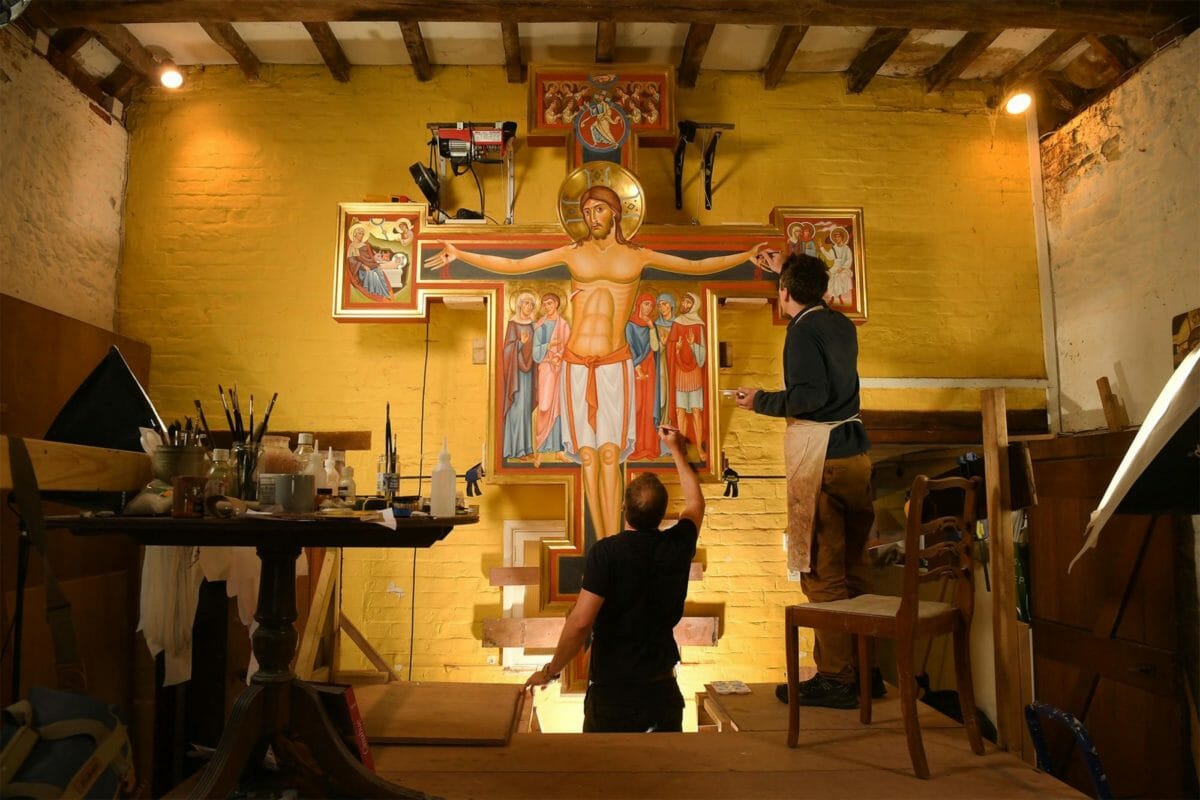
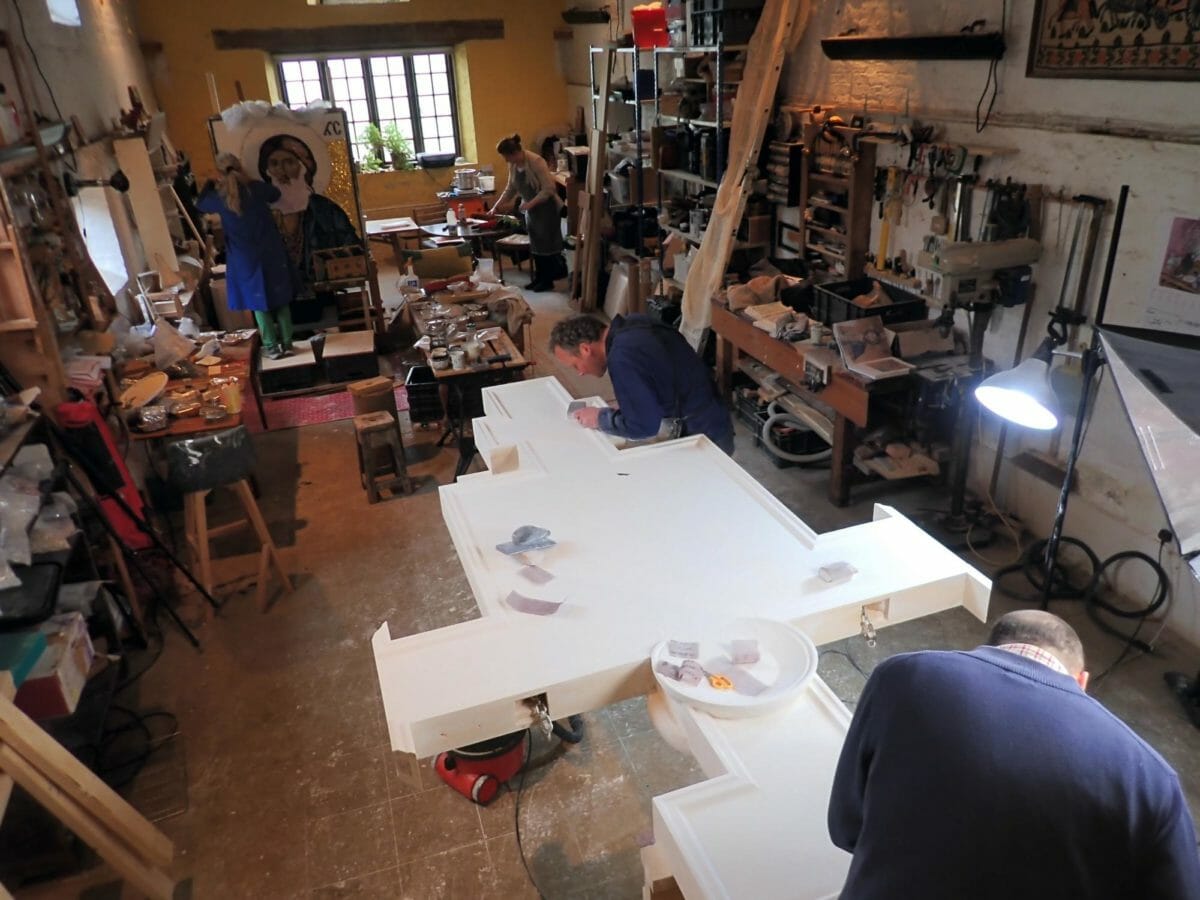
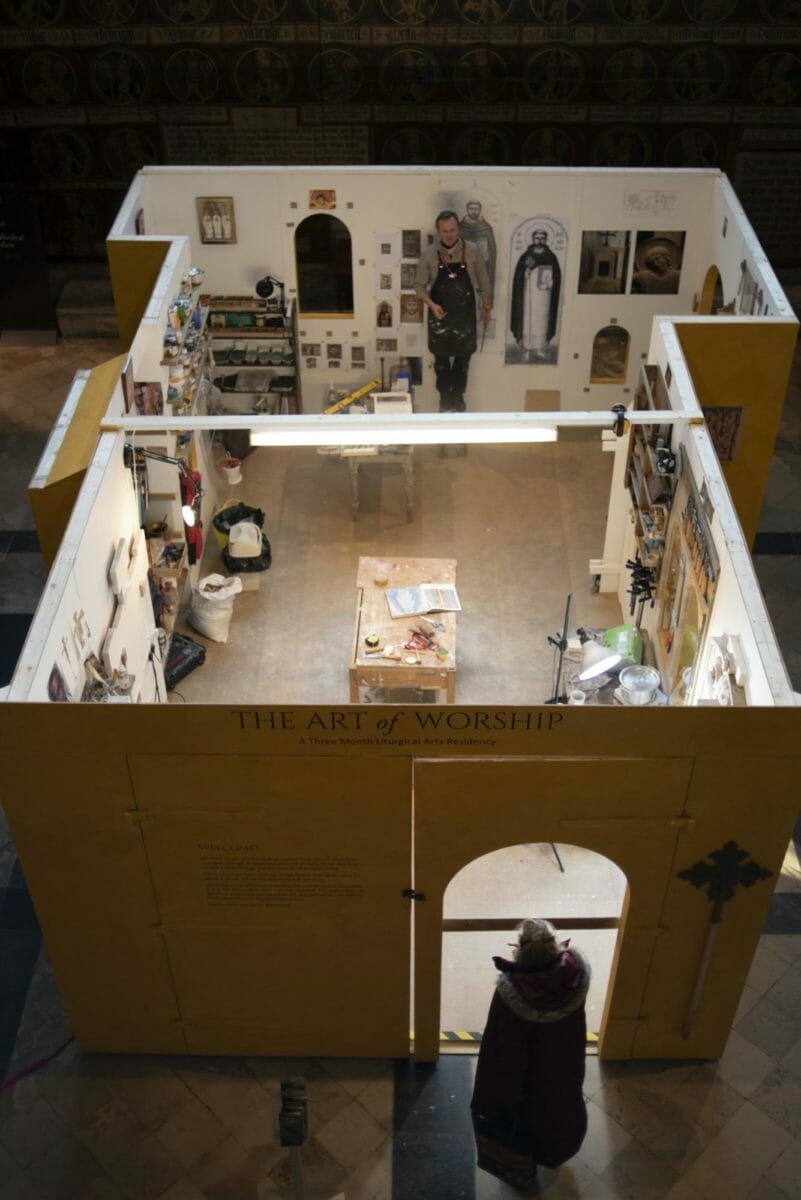
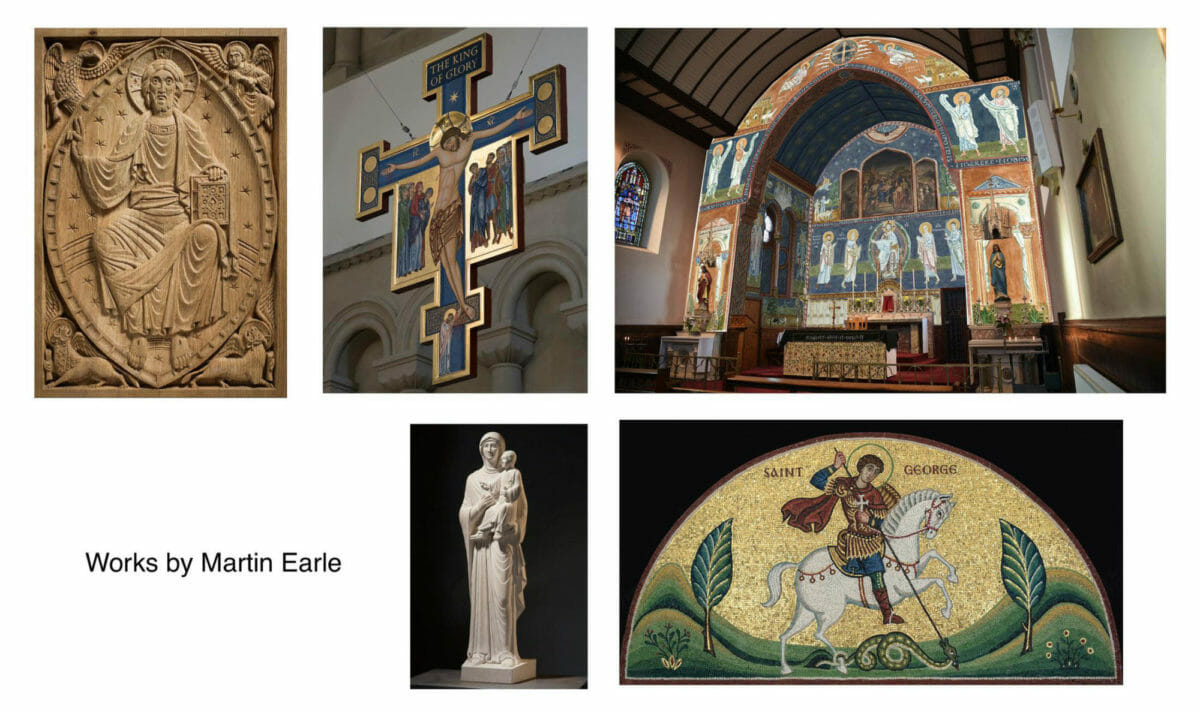
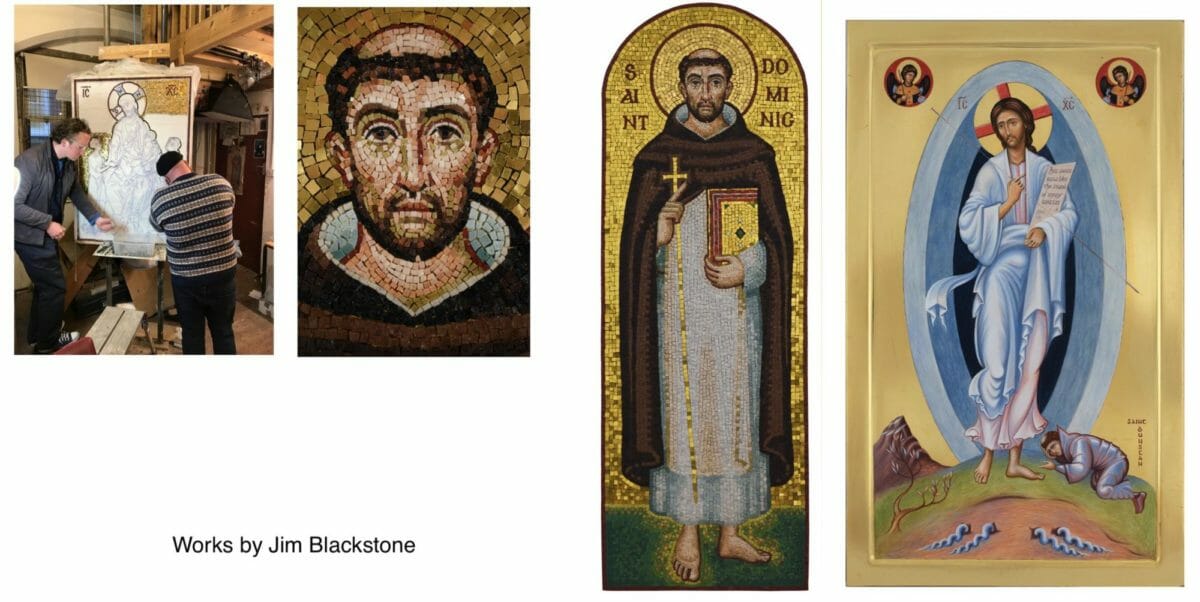
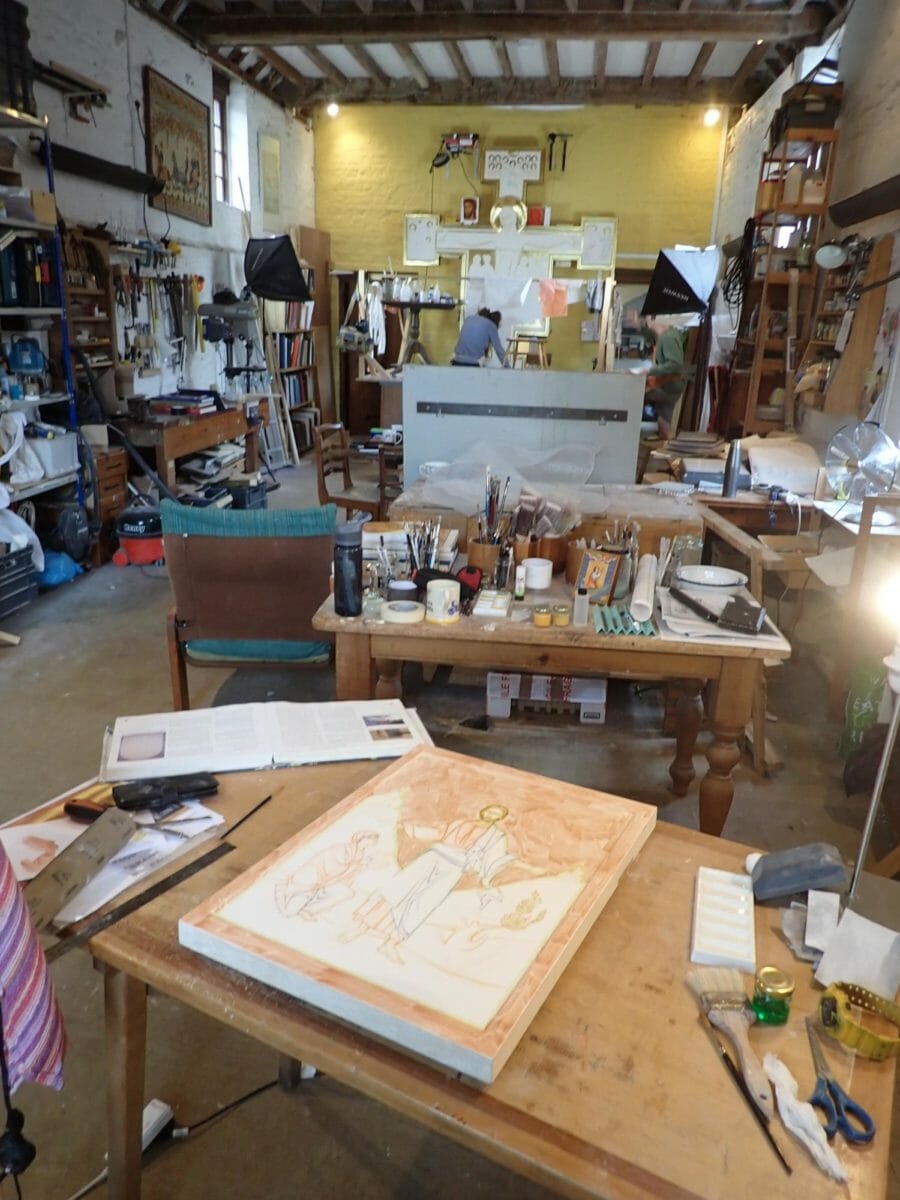
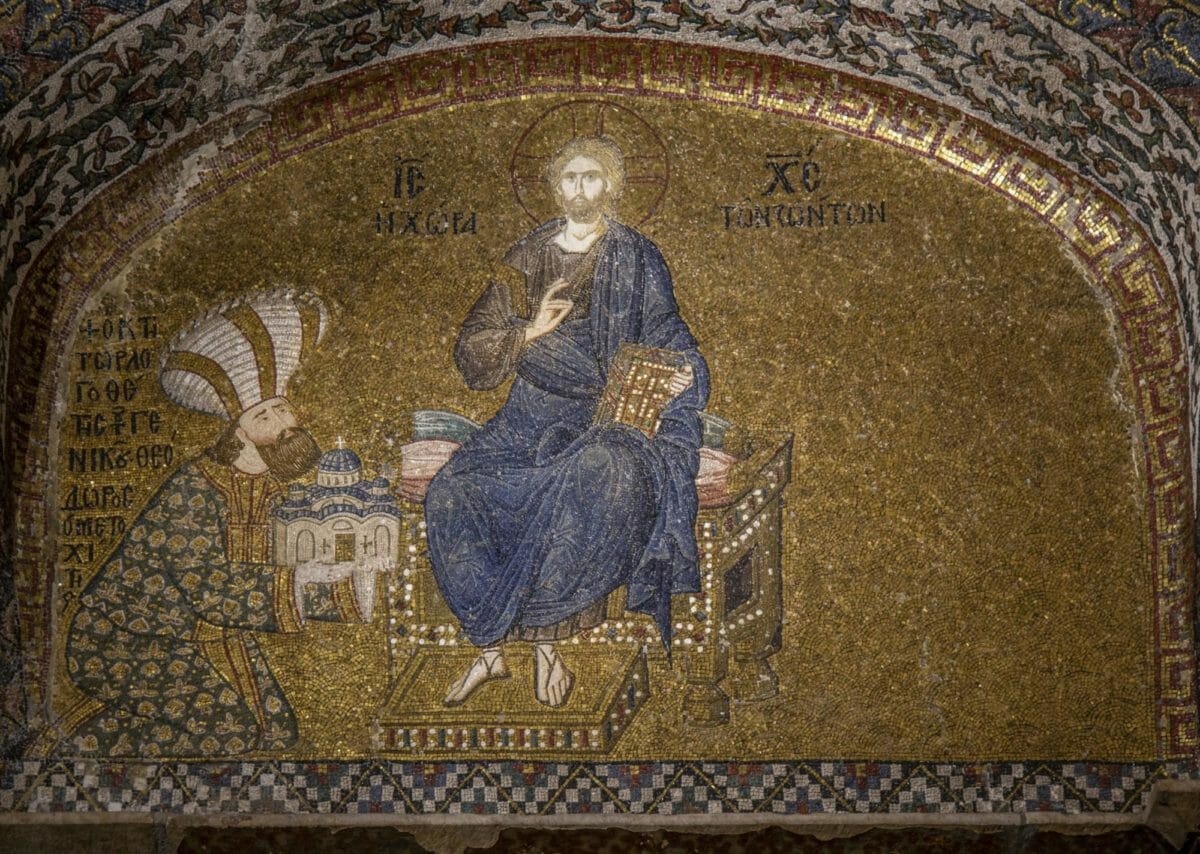
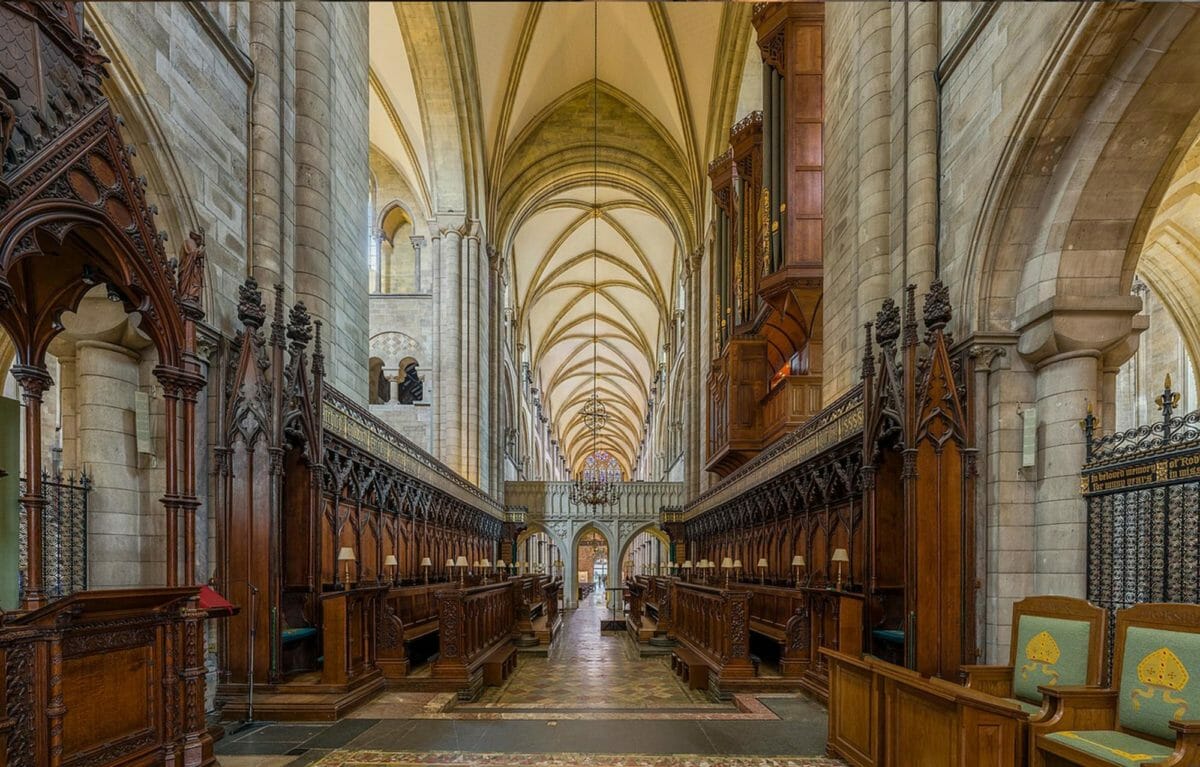
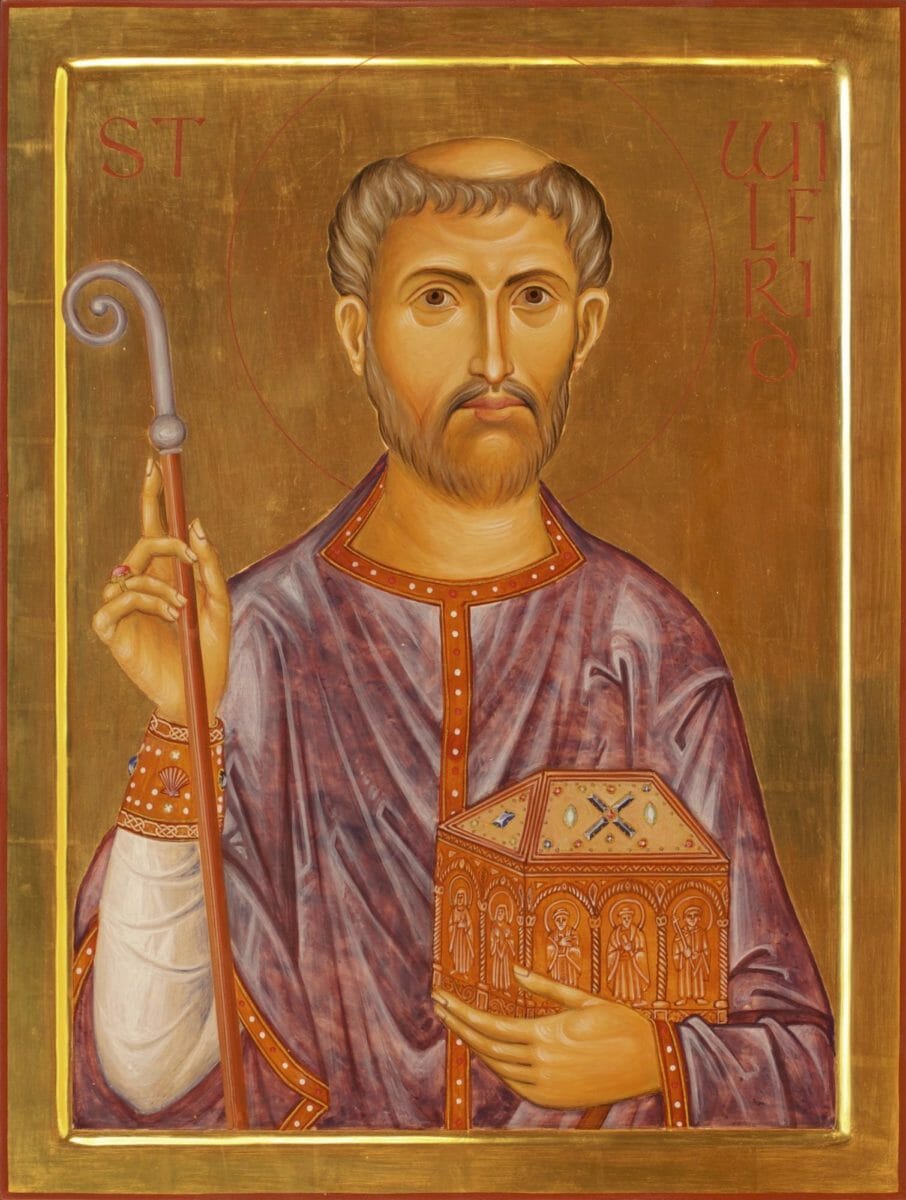
Bravo!
Excellent scholarly approach to a much needed addition in the art world!
A wonderful, and about time, initiative- how I wish it the very best. A lot of people, from near and far, will benefit. .
Excellent! Much needed apprenticeships in the
Liturgical Arts.
I sent an email three days ago enquiring about the enrolment fee and have yet to hear from them.
Thank you Terence. The delay is
probably that Martin travelling at the moment and will only be able to answer emails occasionally until 4th October. I will ask Jim if he can reply.